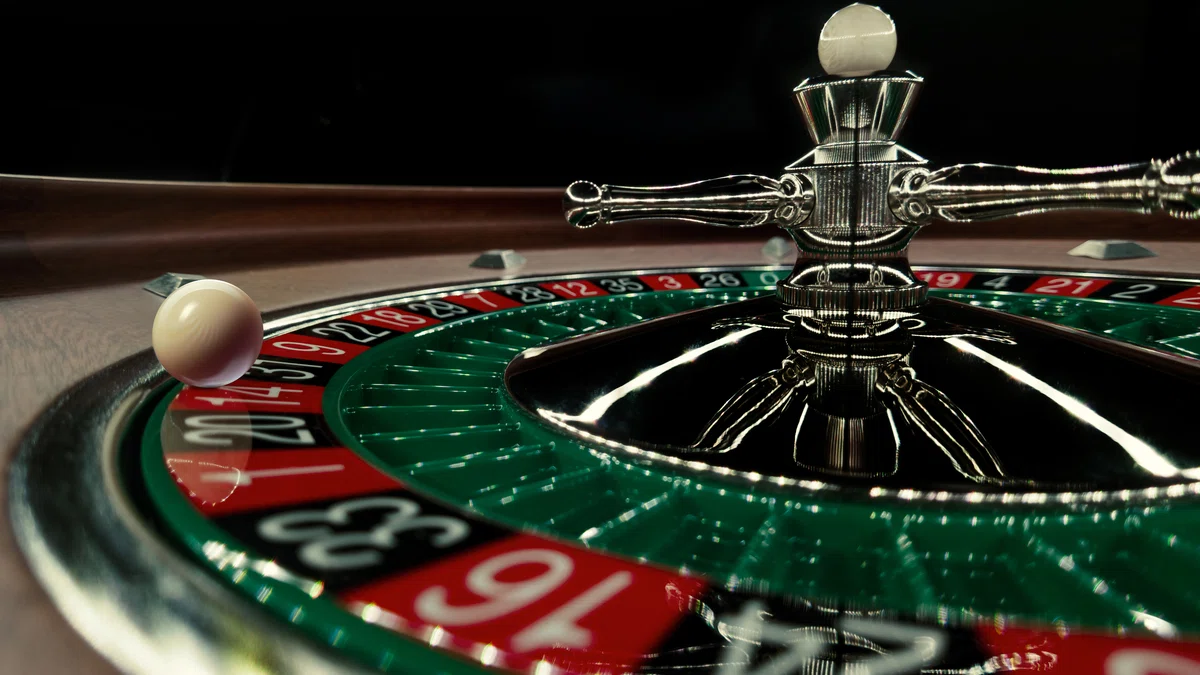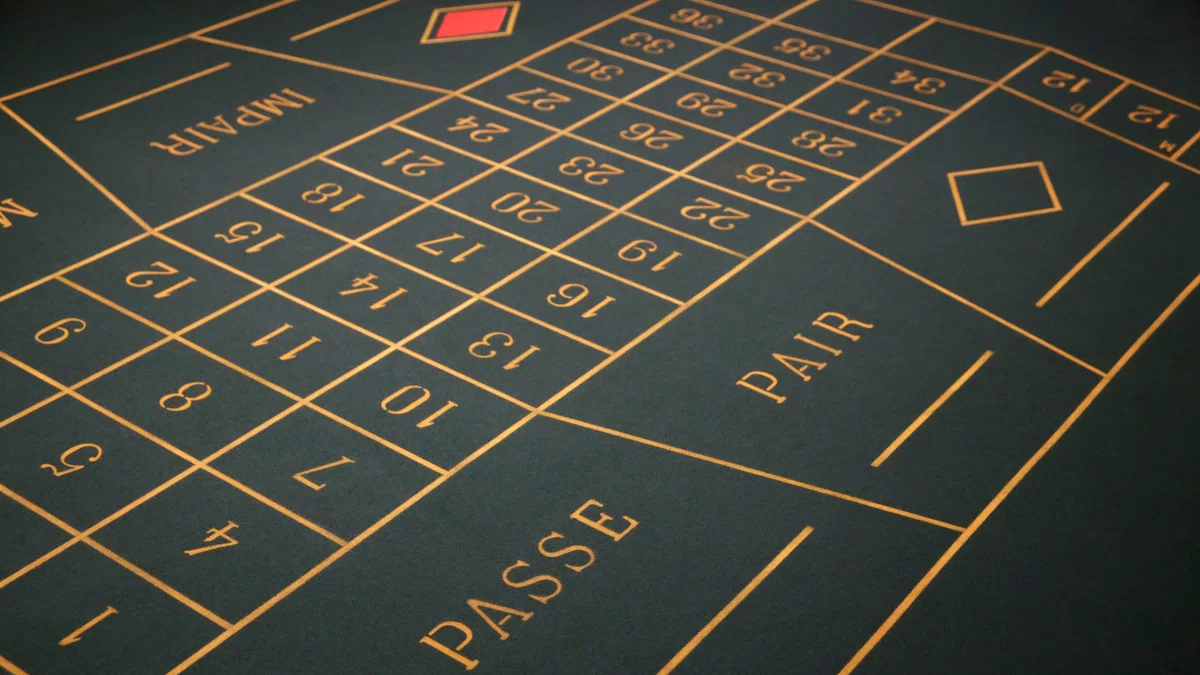When it comes to roulette strategy, many recommend sticking to outside plays – that is, red/black, odd/even, or 1-18/19-36 numbers. These give an almost 50/50 chance between win or loss, so they make for a more consistent experience when combined with risk management strategies.
However, there are two other outside plays that you can use – dozens and columns. These plays will cover less of the wheel, so they’ll have lower odds of winning, but will be even more rewarding if they hit. Consider them a compromise between sweeping outside plays and tight inside plays.
With this guide, you can work dozens and columns plays into your roulette strategy and roulette bankroll management systems.
Know Your Roulette Table
Before we get into dozens and columns plays, you should have some idea of how a roulette chart looks. That’s because a play like ‘columns’ is named after how its numbers are presented on the table. The same naming convention applies to other roulette plays – like corner plays. Take a look at the basic layout of a European roulette table below:
| First 12 | Second 12 | Third 12 | |||||||||||
| 0 | 3 | 6 | 9 | 12 | 15 | 18 | 21 | 24 | 27 | 30 | 33 | 36 | 2 to 1 |
| 2 | 5 | 8 | 11 | 14 | 17 | 20 | 23 | 26 | 29 | 32 | 35 | 2 to 1 | |
| 1 | 4 | 7 | 10 | 13 | 16 | 19 | 22 | 25 | 28 | 31 | 34 | 2 to 1 | |
| 1 to 18 | EVEN | RED | BLACK | ODD | 19 to 36 | ||||||||
This is how most European roulette tables look, though sometimes the non-number plays may have a slightly different arrangement. American tables will have the additional 00 symbol on the left side of the table. Once you learn how to read a roulette table, minor differences in presentation shouldn’t throw you off.
For today’s guide, we’ll be focusing on those spaces highlighted in gold. The first 12, second 12, and third 12 spaces are the dozens – they cover the 12 numbers directly beneath them on the table. Even with table formatting, the first 12 is 1 to 12, the second 12 is 13 to 24, and the third 12 is 25 to 36. As visualized, choosing this will cover roughly a third of the roulette wheel.
The three ‘2 to 1’ spaces on the right are the columns – they correspond to the three lines of numbers extending leftward from that space. This means that column plays focus on non-sequential numbers, unlike dozens, but they still cover approximately a third of the numbers available.
Now that you know how to find dozens and columns on the roulette table, let’s get into how these plays can form a viable roulette strategy.
Related Posts:
How Dozen Plays Works in Roulette
Dozens are much more straightforward than columns, so let’s start with those. As mentioned, each dozen is neatly organized in sequential order. Since a dozen play covers roughly a third of the numbers available, they typically have a 2:1 win ratio. Winning with a dozen play is more probable than an inside play, while having a larger reward than the 50/50 outside plays.
It’s roughly a third because, don’t forget, there can be 37 or 38 numbers depending on the type of roulette you’re playing. Those zeroes skew the odds, giving a 2.70% (European) or 5.26% (American) house edge.
No matter where you play, putting your play on a dozen is a neat compromise between inside and outside plays – you get decent odds and a larger prize, without going to the extreme in either direction. Like every other roulette space, you can play dozens alone, play multiple dozens at once, or combine dozens with other play styles.
How Roulette Column Plays Work
Most of the above applies to column plays – they cover a third of numbers with just below 33% odds of winning, with a more rewarding 2:1 ratio. The difference is that this time, the columns are a set of non-sequential numbers. The three columns are:
- 1, 4, 7, 10, 13, 16, 19, 22, 25, 28, 31, 34
- 2, 5, 8, 11, 14, 17, 20, 23, 26, 29, 32, 35
- 3, 6, 9, 12, 15, 18, 21, 24, 27, 30, 33, 36
Just like with dozens, you can play one column, or two, or add in other plays from elsewhere on the roulette table. Since the fundamentals of dozen and column plays are so similar, you’ll often find them grouped together in roulette strategy guides like this one. Together, the six plays form the dozens and columns strategy where a player relies on these spaces when they visit the roulette table.
The Dozens and Columns Strategy Explained
Now you know how each separate play works, let’s look at how you can combine dozen and column plays into a coherent strategy.
When used as part of a broader strategy, you should cover not one but two dozen or column placements – 24/36 numbers. This doubles your probability of winning, putting the odds in your favor, and allowing you to make a small profit from the win.
Side note: Many tables will let you place your play on all three dozens or columns, but doing this will result in a loss since your 2:1 win won’t be enough to recoup what you put down. That’s why this strategy recommends playing two of the three instead.
Depending on your table, every dozen/column space has a 32.43% to 31.58% win probability. Hit two at once, those numbers become 64.86% (European) and 63.16% (American) which both put you above the 50/50 odds of everyone’s favorite red or black spaces.
While hitting two spaces at once increases your chance of winning, it does cut into your gains. Roulette is a game of luck and there’s no fast, easy strategy toward big wins.

The Martingale Dozens & Columns Roulette Strategy
Many pair the above strategy with a negative progression playing strategy – this is where you increase how much you put forward every time you lose. It works just like the very popular Martingale system, but instead of doubling what you put forward, you multiply it by three instead. You do that because each dozen/column is one of three, so (just under) 33/100 instead of 50/50 like the outside plays used for the Martingale approach.
So, if you put 1 on two of those dozen spaces and then lose, you’ll put 3 on the next two spaces. This provides a predictable structure to your time at the table, while the tripling method is such that you can potentially recover losses, though it’s important to understand that this isn’t guaranteed.
The x3 multiplication used for this strategy adds up fast, a losing sequence looks like this – 1, 3, 9, 27, 81, 243. This can quickly reach the maximum limit for your table, so that’s another thing you need to consider when trying this strategy. When putting any sequence strategy in action, you should check max limits to see how far down the sequence you could play, if you need to.
If you prefer to play the classic Martingale sequence where you double what you put forward, then you can play one dozen/column at a time. You may have worse odds, but this gives your streak more breathing room because it takes 15 steps to reach 200+ plays instead of the six steps described above.
The Paroli Dozens Roulette Strategy
If the Martingale system can work with dozens/columns, then so can the Paroli roulette system. This is a reverse Martingale, so it’s a positive progression approach where you’d triple your plays whenever you win. The traditional strategy calls for double, but remember, we’re dealing in thirds here instead of the 1:1 outside plays.
Most of what we’ve written for the Martingale strategy above applies to this approach, just in the opposite direction. There’s another key difference – Paroli sequences typically stop after three, so the sequence is 1, 3, and 9. If you win three times in a row, then your fourth play reverts back to the original amount you started the sequence with.
The Fibonacci Dozens Roulette Strategy
The Martingale system isn’t the only popular strategy that’s compatible with the dozens and columns approach. There’s also the Fibonacci roulette strategy (which can be used with both dozens and columns).
If you’re not familiar with the Fibonacci sequence, it’s where each new number in the sequence is the sum of the two numbers behind it. So, the first ten steps are 1, 1, 2, 3, 5, 8, 13, 21, 34, and 55. In this strategy, you move up that sequence every time you lose. For dozens/columns, you’ll need to put the number on each of the two spaces you’re playing.
This approach carries more risk than the traditional Fibonacci strategy because you’re covering fewer numbers. The trade-off is that the 2:1 win ratio is twice as powerful, so it’s theoretically easier to stave off losses if that win does show up. The increase is more gradual than the Martingale strategy, too, so you can theoretically last longer during a losing streak and potentially turn it around. Even still, beware losing streaks when using any negative progression strategy – roulette is a game of pure luck and everybody has odds-defying bad luck on occasion.
Summarizing the Dozens and Columns Strategy
When you play dozens/columns, you’re engaging in a placement strategy. This means it can be paired with a bank management strategy like the ones we’ve listed here, but also lesser known systems. Before trying your favorite playing sequence, you should always run the numbers to make sure the sequence is compatible with 2:1 win ratios.
When combined with a budget and good roulette bankroll management systems and habits, layered strategies can provide helpful methods to organize your gambling session for those who prefer to have some structure while playing.
Now it’s when the rubber hits the road: try this strategy on our live social roulette games at McLuck social casino and get the fun going!
Related Posts:

